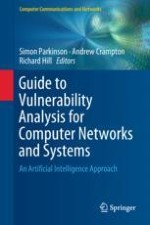2018 | OriginalPaper | Buchkapitel
Vulnerability Detection and Analysis in Adversarial Deep Learning
verfasst von : Yi Shi, Yalin E. Sagduyu, Kemal Davaslioglu, Renato Levy
Erschienen in: Guide to Vulnerability Analysis for Computer Networks and Systems
Aktivieren Sie unsere intelligente Suche, um passende Fachinhalte oder Patente zu finden.
Wählen Sie Textabschnitte aus um mit Künstlicher Intelligenz passenden Patente zu finden. powered by
Markieren Sie Textabschnitte, um KI-gestützt weitere passende Inhalte zu finden. powered by
